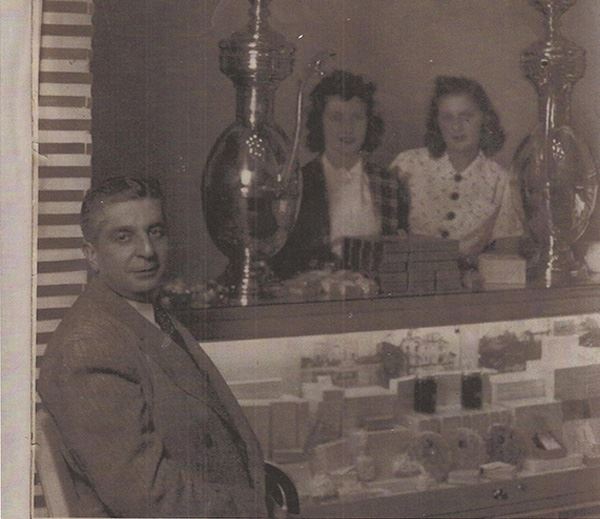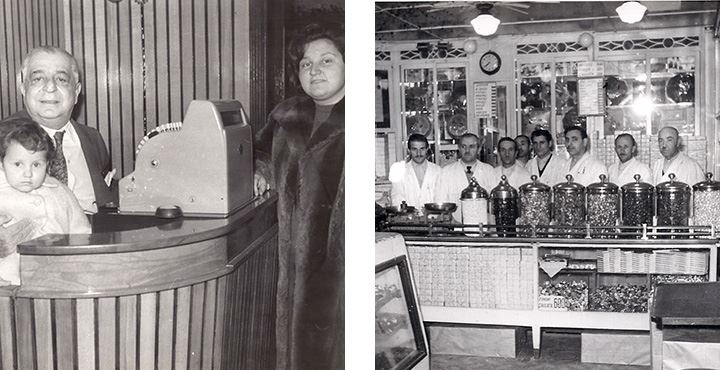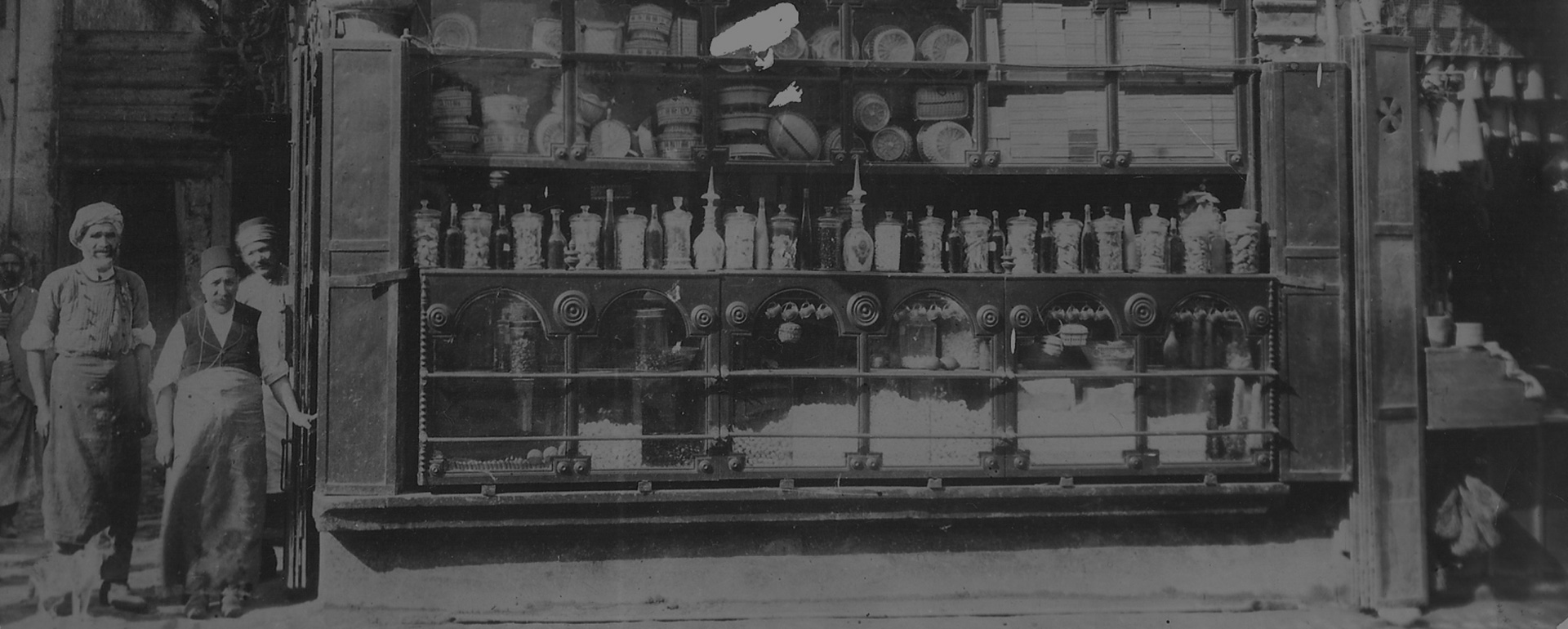In confectionery production which started in the 16th century in Turkey, honey and molasses were used as sweeteners, and flour was used for binding water and attaining the desired texture. By the 19th century, sugar refineries were set up in Europe and their produce began to come to Turkey under the name "loaf sugar". Confectioner Hacı Bekir would bray and melt this sugar, and then add rose petals, cinnamon, gum mastic, orange or lemon to produce hard candies of various flavors and colors.
Hacı Bekir Effendi also introduced the use of starch, which was being experimented by German scientist Constantin Kirchhoff, instead of flour; and using the combination of sugar and starch, he created and improved lokum, which is an irreplaceable delicacy of our cuisine and still inimitable by the rest of the world..

Ingrained in our culture and tradition as a significant element of Turkish-Ottoman history, Hacı Bekir has also featured in novels and articles documenting the lifestyle of the times, been penned by foreigners who were components of the İstanbul mosaic of the 19th and 20th centuries, and even been portrayed by the Maltese artist Amadeo Preziosi, one of the most famous of his era. The original painting of 43x58 cm, showing Hacı Bekir in his shop with details hinting to the lifestyle of the times now hangs in the Louvre Museum. A lithographic reproduction of the painting is exhibited as item number 214 in the Topkapı Palace.
In 1873, Mehmed Muhiddin Effendi was charged by the palace to present Ottoman confections in a fair organized in Vienna under the care of Franz Joseph I, Emperor of Austria and King of Hungary. He returned home with a silver medal and, having observed that all western participants carried their own trademark, created the first ever trademark of the Ottomans and his company, using the silver medal as a logo.



After the passing of Ali Muhiddin Hacı Bekir in 1975, production continued under the name Hacı Bekir Manufacturing Inc. and retail activities under the name Ali Muhiddin Hacı Bekir Trading Inc.
In 1989, manufacturing activities which took place in Eminönü ever since the beginning were moved to the modern production plant in Pendik.


In addition to developing various kinds of Turkish candies and lokums through his meticulous personal work, Hacı Bekir also became a legend with his almond candies made in swinging cauldrons and various almond pastes made by kneading and shaping boiled and peeled almonds with sugar and sherbet.
When the fame of Hacı Bekir's candies and lokums reached the Ottoman Palace, Sultan Mahmud II, the reformist sovereign who was the founder of the modern Ottoman, appointed him as Chief Confectioner to the Palace and also rewarded him with "Nişan-ı Ali Osmani", a medal of honor of the first degree.






Hacı Bekir Effendi, earning the title Hacı after his pilgrimage to Mecca between 1817 – 1820, had come to İstanbul from Araç, Kastamonu in 1777, opening a small shop in Bahçekapı and selling confections such as lokums and hard candies which he personally produced. Hacı Bekir today has a proud past of four centuries with delicacies relished in five continents.
In confectionery production which started in the 16th century in Turkey, honey and molasses were used as sweeteners, and flour was used for binding water and attaining the desired texture. By the 19th century, sugar refineries were set up in Europe and their produce began to come to Turkey under the name "loaf sugar". Confectioner Hacı Bekir would bray and melt this sugar, and then add rose petals, cinnamon, gum mastic, orange or lemon to produce hard candies of various flavors and colors.
Hacı Bekir Effendi also introduced the use of starch, which was being experimented by German scientist Constantin Kirchhoff, instead of flour; and using the combination of sugar and starch, he created and improved lokum, which is an irreplaceable delicacy of our cuisine and still inimitable by the rest of the world.

Through his personal meticulous work in the production process, Hacı Bekir Effendi developed the Turkish candy and lokum varieties. In addition to these, almond candies made in swinging cauldrons and various almond pastes made by kneading and shaping boiled and peeled almonds with sugar and sugar syrup have earned him the legendary fame which still prevails.
When the fame of Hacı Bekir Effendi’s delicious hard candies and lokums reached the Ottoman Palace, the reformist Sultan Mahmud II, known as the founder of the modern Ottoman, rewarded him with an imperial medal of honor of the first degree and appointed him as Chief Confectioner to the Palace and confections for the palace began to be bought from Hacı Bekir Effendi’s workshop.

It is rumored that while these were happening in İstanbul, an English customer of Hacı Bekir Effendi was offering around the lokums he had brought from İstanbul as ‘Turkish Delights”, with a name he himself had coined. Since then, lokum came to be known as “Turkish Delight” in general, especially in English speaking countries, and as “Lokoum” in France and the Balkans.

Ingrained in our culture and tradition as a significant element of Turkish-Ottoman history, Hacı Bekir has also featured in novels and articles documenting the lifestyle of the times, been penned by foreigners who were components of the İstanbul mosaic of the 19th and 20th centuries, and even been portrayed by the Maltese artist Amadeo Preziosi, one of the most famous of his era. The original painting of 43x58 cm, showing Hacı Bekir in his shop with details hinting to the lifestyle of the times now hangs in the Louvre Museum. A lithographic reproduction of the painting is exhibited as item number 214 in the Topkapı Palace.
Following the death of Hacı Bekir Effendi, first his son Mehmed Muhiddin Effendi, and after him, his grandson Ali Muhiddin Hacı Bekir took over the business. They continued with the same principles, talents and dedication, and the honorary title of Chief Confectioner to the Palace remained within the family for generations.
In 1873, Mehmed Muhiddin Effendi was charged by the palace to present Ottoman confections in a fair organized in Vienna under the care of Franz Joseph I, Emperor of Austria and King of Hungary. He returned home with a silver medal and, having observed that all western participants carried their own trademark, created the first ever trademark of the Ottomans and his company, using the silver medal as a logo.

Later, in 1888, confectioner Mehmed Muhiddin Effendi participated in the Cologne Fair organized under the care of Augusta, Empress of Germany and Queen of Prussia, and returned home with his second silver medal. In 1893, in the Chicago World’s Fair celebrating the 40th anniversary of the arrival of Columbus to America, Mehmed Muhiddin realized the first production and sales of lokum there, introducing this specialty to the continent. In the Brussels Fair in 1897, he added gold medals to his trophies.

Ali Muhiddin, although quite young, took over when his father Mehmed Muhiddin passed away, and realized many breakthroughs with the help and support of his mother Reşide. His time was the golden era of the company. Gold medals were received in the Paris and Nice Fairs in France in 1906. The title of Chief Confectioner to the Palace was also granted to Ali Muhiddin.
Under the management of Ali Muhiddin Hacı Bekir the grandson, Hacı Bekir became a world class company with groundbreaking business enterprises on an international level. Near the end of the Ottoman Empire, in 1911, Ali Muhiddin was granted the title of Chief Confectioner by the Palace of Egypt as well. Master confectioners and lower staff were sent to open branches in Cairo and Alexandria, the two major cities of Egypt.

In the year 1926, in the first floating fair designed by Mustafa Kemal Atatürk to promote Turkish industry in North African and European countries, Hacı Bekir confectioneries took their place on the steamer Karadeniz to be exhibited for 90 days along with the limited number of industrial and agricultural products of the times.

In 1934, with the enaction of the Surname Law, the trademark evolved into its presently used form. In 1939, the company participated in New York World Trade Fair, presenting their lokums and other products made by confectioners from Turkey.


In 1965, traditional production began to be modernized with the use of machinery imported from West Germany. After the passing of Ali Muhiddin Hacı Bekir in 1975, production continued under the name Hacı Bekir Manufacturing Inc. and retail activities under the name Ali Muhiddin Hacı Bekir Trading Inc. In 1989, manufacturing activities which took place in Eminönü ever since the beginning were moved to the modern production plant in Pendik.

The first franchise opened in 2007. Operating under the management of family members of the fourth and fifth generations and still expanding their vast knowledge and experience of two and a half centuries, the company initiated online sales. As the oldest company in Turkey and one of the oldest 100 in the world, Hacı Bekir still continues to create the world’s most delicious, top quality confections. In addition to the shops in Eminönü/Bahçekapı, Beyoğlu/Parmakkapı, Kadıköy, the Turkish Delicacies Museum shop in Maslak, and the franchise in Bakırköy, the Atakule branch in Ankara/Çankaya has been added to the sales network. Today, the fifth and sixth generations of the family in business and the personnel from all levels of the Hacı Bekir Company proudly share the good fortune of being the epitome of quality and taste at home and abroad for so many generations.




